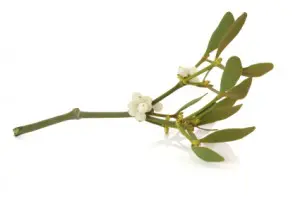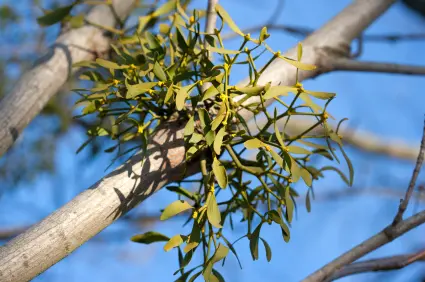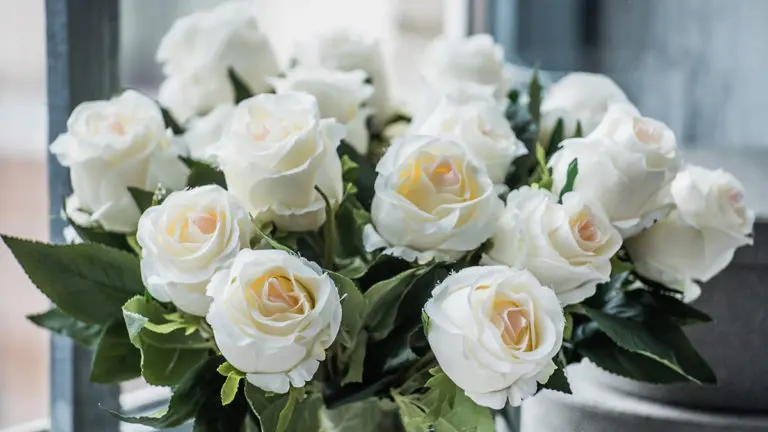
Nowadays, mistletoe has become a mainstay at Christmas parties everywhere. The rules are simple: If you find yourself standing underneath mistletoe hanging in a doorway, you have to lay a smooch on your sweetie or, if you’re single, the person standing closest to you. You know it as one of the most fun and romantic traditions of Christmas, but do you know how it got its start? Read on to learn the story behind the kissing plant!
What makes mistletoe special

This little bough of berries is no ordinary plant: It doesn’t grow in the ground. Instead, it lives on, and feeds off, the bark of trees (oaks, mostly). It even thrives during the winter, when trees shed their foliage, creating a beautiful tuft of bright green leaves and juicy berries among the bare branches. The tiny berries can be either bright red or white, and the color of its flowers can range anywhere from yellow to green. Even though the berries were once thought to be an aphrodisiac that held the soul of the tree, they’re actually quite poisonous. So make sure you don’t snack on one after you’re done lip-locking with that someone special!
History of mistletoe
Mistletoe in ancient mythology
Although mistletoe’s reputation as the sprout of love may seem like a thing of the present, it actually takes root in ancient times. The plant’s knack for staying lush and fruitful throughout the year led the ancients to use it as a symbol of fertility, and the Greek goddess Artemis wore a crown of mistletoe as an emblem of immortality. The plant also played a sacred role in the Druids’ celebration of the winter solstice: They would use a golden knife to cut it from the oak, and they would use it to make potions that were believed to boost procreation.

Other civilizations saw mistletoe as a sign of peace rather than provocativeness. Ancient Scandinavians demanded that anyone who came across an enemy beneath the bloom had to put their weapons aside, give each other a hug, and agree to a truce for the rest of the day. This kind gesture could be what initially sparked the affectionate custom of kissing beneath the berries.
But the most well-known myth behind the history of mistletoe is the legend of Baldar, the Norse god of the summer sun. When Baldar dreamed about his own death, his mother — Frigga, the goddess of beauty and love — begged all the plants, animals, and earthly elements to protect him. But she forgot to talk to one plant that was high off the ground: the mistletoe. That’s when Loki, the god of mischief, fashioned a poisoned dart from mistletoe and killed Baldar, bringing darkness and cold to the entire world. But when the grieving Frigga shed tears all over the mistletoe berries, Baldar magically came back to life. Frigga was so happy that she gratefully kissed everyone who walked underneath the mistletoe, establishing it as the kissing plant we know it as today.
The modern tradition of kissing underneath the mistletoe

Since then, the story of mistletoe has been wrapped in romance. Beginning in the Victorian era, mistletoe was decorated with ribbons and hung during Christmastime. Young single girls couldn’t turn down a kiss when they were standing beneath this pretty little sprout, and young men would take a berry from the sprig after each kiss. Once all the berries were plucked, the plant would lose its amorous powers and would have to be taken down and then replaced the following Christmas. If a girl didn’t get kissed in time before the mistletoe was removed, that meant that she wasn’t going to get married for a year. But the couple that does meet under the kissing plant was said to have good luck, marriage, and a long life ahead of them.






